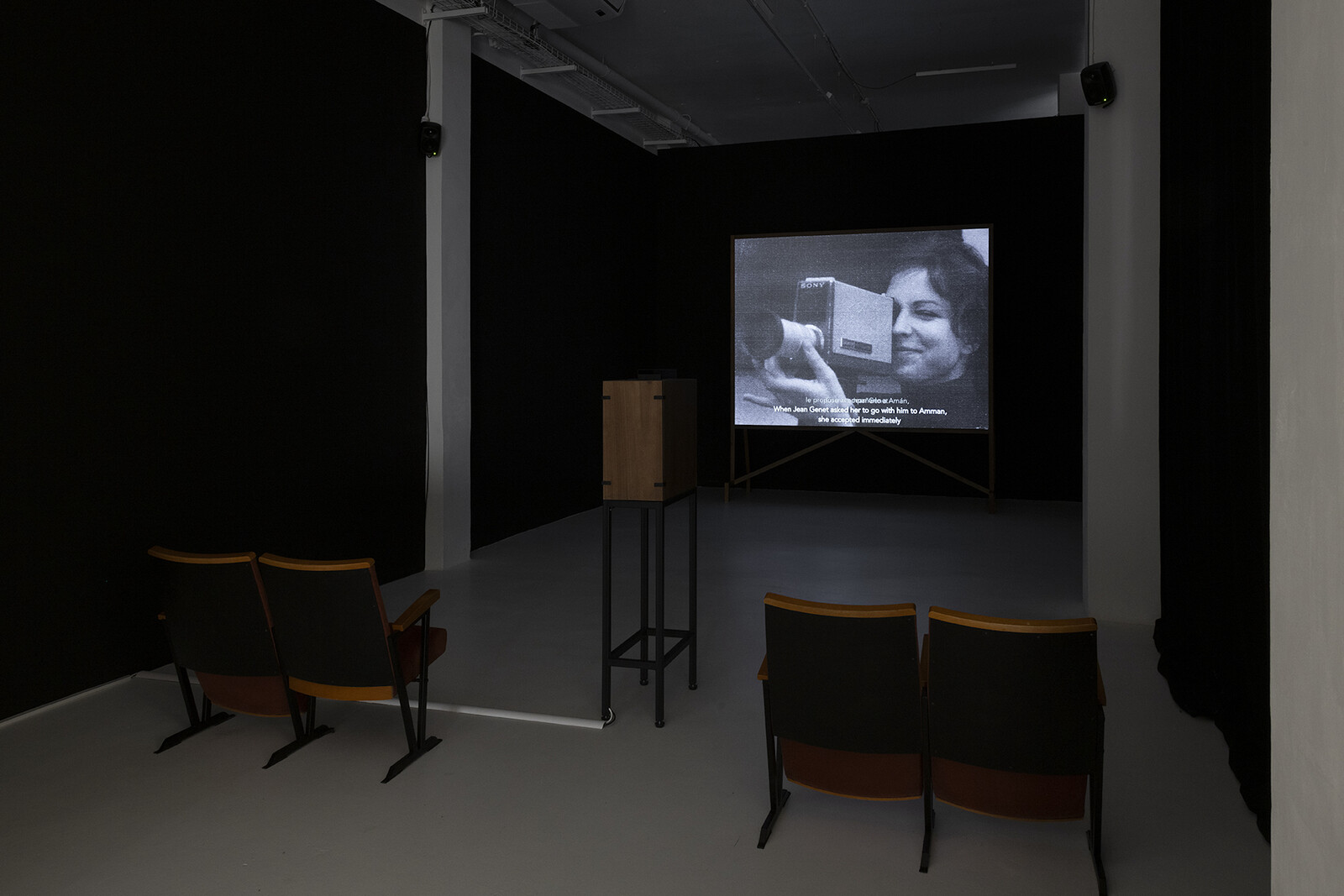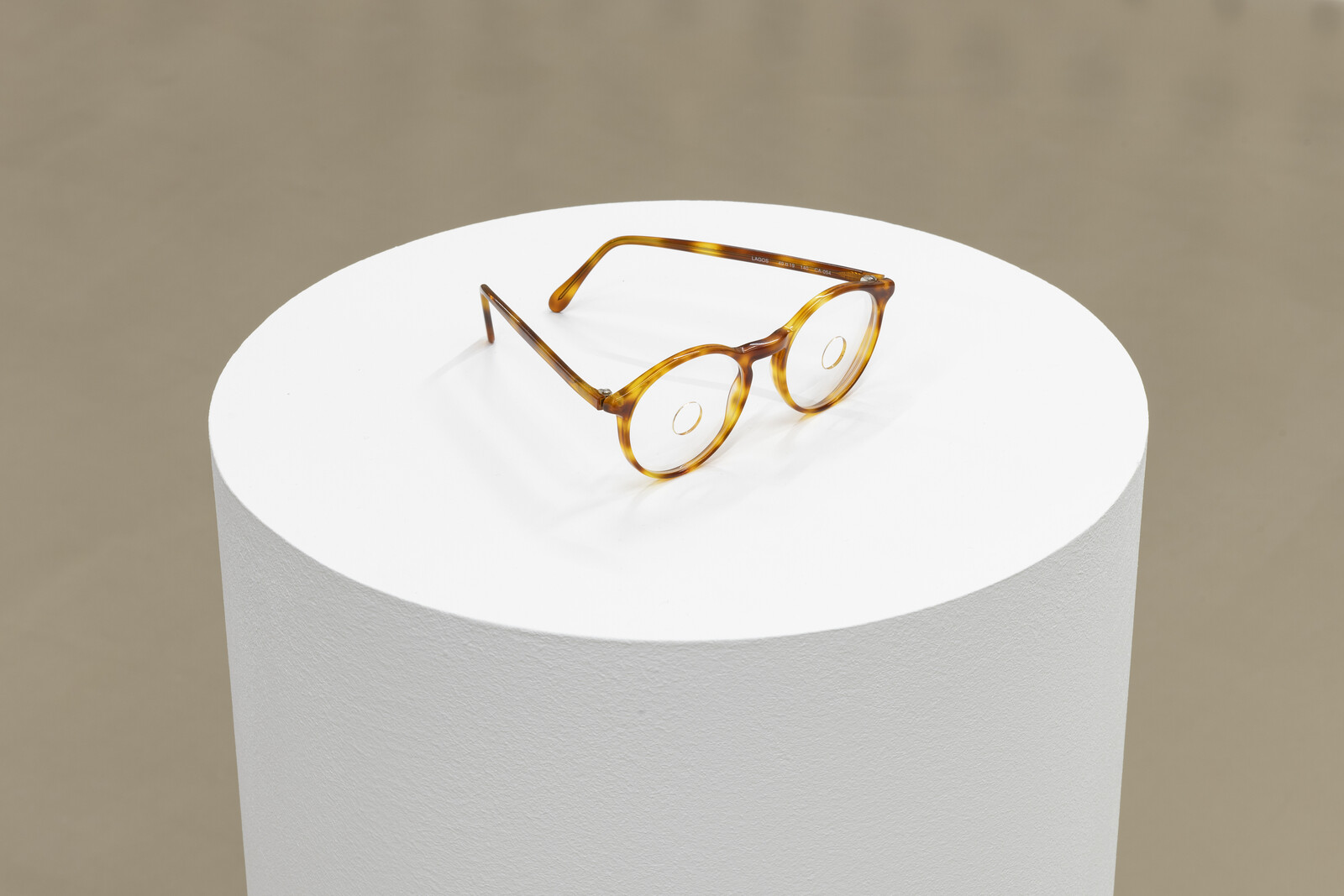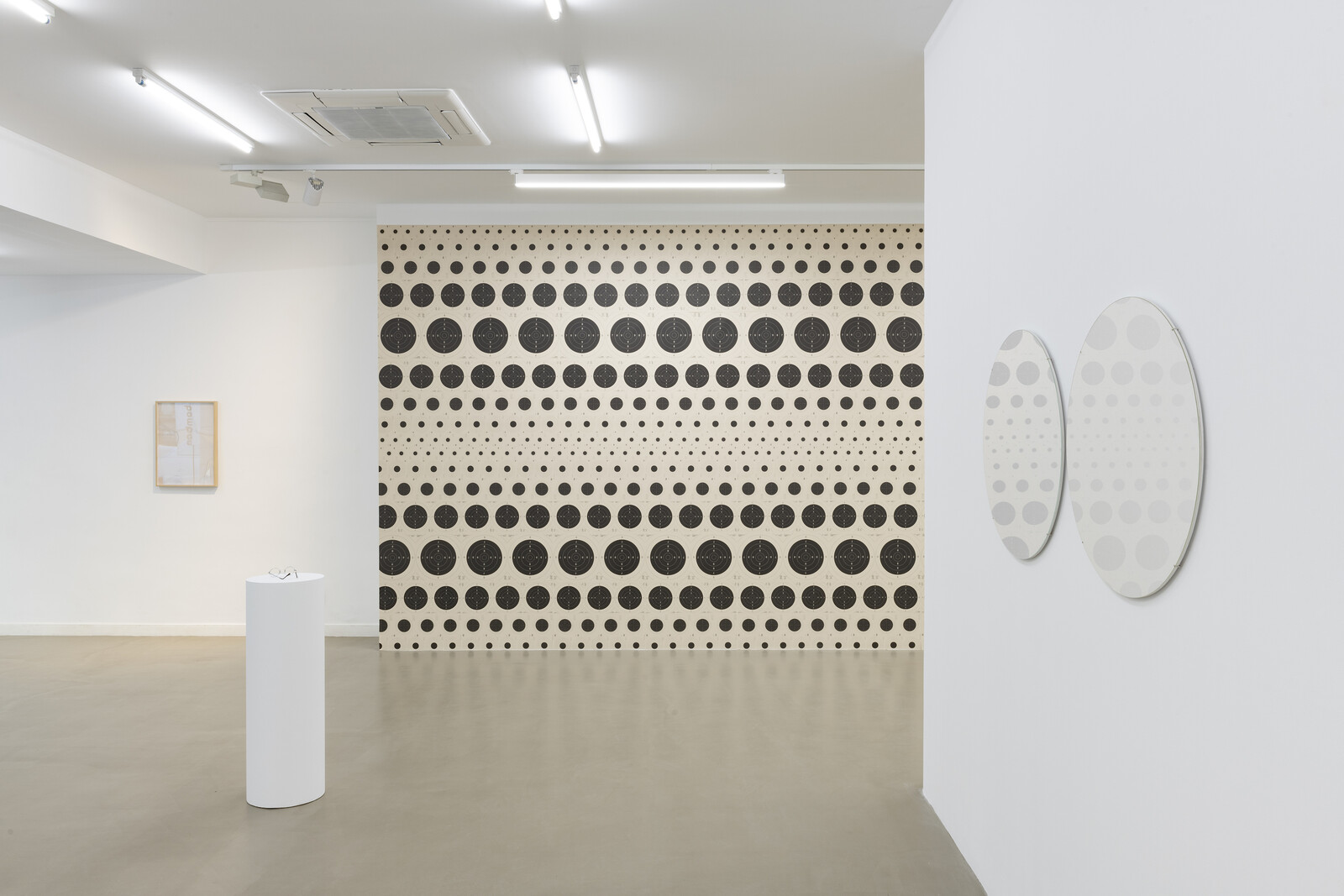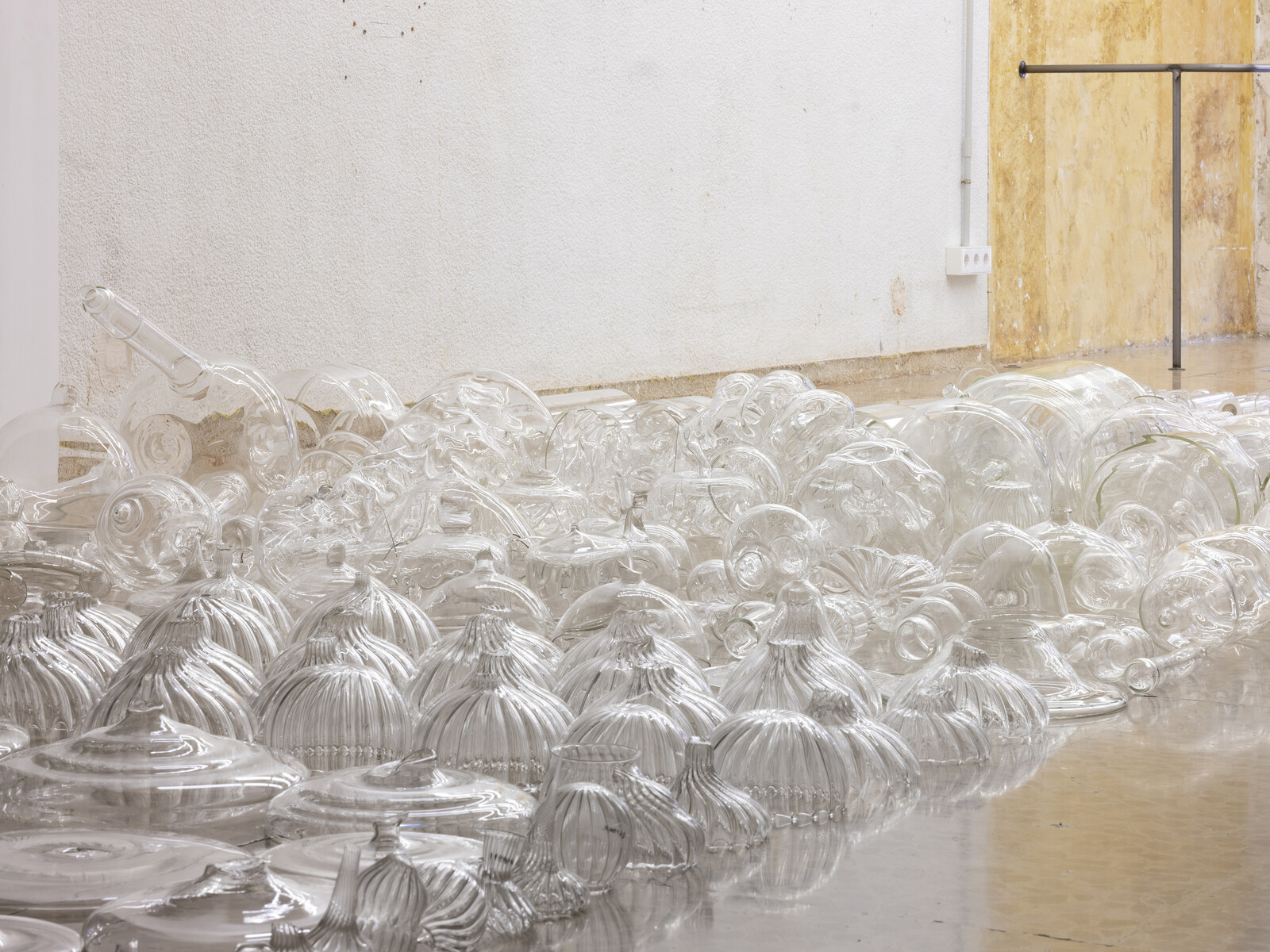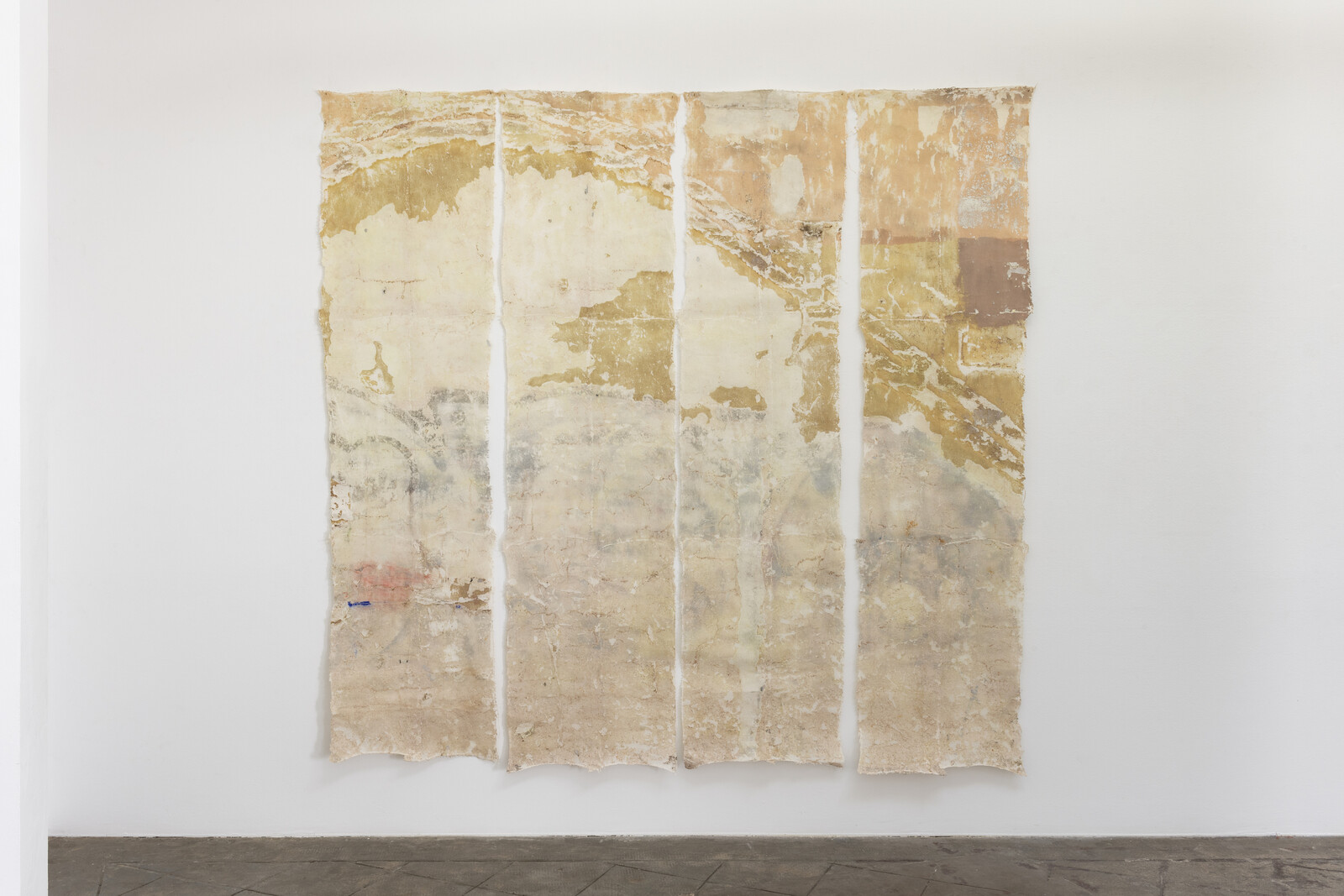Enric Farrés Duran’s show at Bombon Projects was among the most on-the-nose exhibitions at this year’s Barcelona Gallery Weekend (BGW)—and not just because of the glasses. That technologies that purport to measure the world are not reliably accurate is less troubling, his work proposes, than the tendency to act as if they are. These stark and satirical pieces reference optometry (pairs of dysfunctional glasses, such as one with two holes in its lenses, on freestanding plinths), museum display practices (a canvas turned to face the wall, another with nothing on it but a few tips for cleaning glass), and shooting (a wall papered with rifle targets). One work—a glass-fronted frame containing smashed museum glass—reduces the theme to the point of absurdity: not the “cracked looking glass” of Joycean modernism but an art that flaunts its own shattered illusions. The spectacles are broken, but they haven’t yet been replaced.
BGW’s ninth edition, which featured works by more than sixty artists exhibited in twenty-seven galleries across the city, showcased the robustness and vitality of Barcelona’s gallery scene. As such, it set an ironic context for a shared concern of several exhibitions: fragility. This manifested in the use of delicate materials—glass featured prominently in more than one show—and in an emphasis on process rather than polish, aura rather than object. Patricia Dauder’s elegant “Interiors” at ProjecteSD seemed at times to combine both tendencies. Vestigis #1 (Cases desaparegudes al carrer Degà Bahí) [Vestiges #1, Disappeared Houses on Degà Bahí Street, 2022] was a strikingly large and contrastingly frail piece made by taking impressions of a wall in a partially demolished building in Barcelona. The result is a kind of fresco across four hanging strips of cotton muslin, the pastel hues of which suggest different living spaces and layered histories retrieved from invisibility.
At Zielinsky, the soft forms and subtle colors of Sandra Monterroso’s fabric sculptures—threads dyed with cochineal, turmeric, and Indigofera, strung and bundled into vaguely anthropomorphic forms—draw on the artist’s Mayan heritage, marshaling indigenous practices at risk of extinction in resistance to the legacies of European, and specifically Spanish, colonialism in South America. A group show at Carles Taché—the best group show I saw all weekend and the most historical in flavor, with works by gallery stable artists dating from 1986 to 2018—were paintings by Bosco Sodi and Michael Joo. Sodi’s thick, crusted canvas (untitled, 2008), its sand fixed into vermillion mounds and blackened furrows, resembled both landscape and wound, while Joo’s Barcelona (2017) was made by leaving a canvas treated with silver nitrate outdoors, exposed to the elements and wild animals, resulting in a gorgeously imperfect, gold-tinged record of an unpredictable process.
I wondered if the fragility that I detected across BGW constituted a collective response to a widespread anxiety, perhaps even dread—the awareness of how easily the systems on which societies depend can shatter and collapse. Jordi Alcaraz’s show at Mayoral worked with transparency to monumental ends—the diptych El mecanismo de un reloj de sol [The Mechanism of a Sundial, 2023] is four meters across—with puddles and dribbles of inky resin stark against transparent sheets of perforated acrylic glass. As in Duran’s work, there was a layering of fragilities, yet here it felt part of a particular mark-making repertoire. At Dilalica—next door to Bombon—Stella Rahola Matutes’s La Biblioteca [The Library, 2023] glass was used to more affecting ends. This installation featured some 1,713 glass objects—vases, tubes, and vials rejected by glassblowing workshops, a few of them fractured—arranged on the floor in a neat rectangle some 12.4 meters on its longer edge. One effect of this carpet of fragile objects was to heighten the ambient tension in the room, as anxious visitors (including my accident-prone self and a woman whose excitable terrier was squirming in her arms) picked their way around the edges of the piece. The time and care it must have taken Matutes to amass, preserve, and display this collection felt especially palpable given the ease and speed with which it could be destroyed.
Bouchra Khalili’s rich and deeply researched The Magic Lantern (2019–22), in her retrospective “Fanning the spark of hope in the past” at ADN Galeria, is narrated in chapters. Speaking directly to camera, the storyteller traces the history of “revolutionary technologies,” from magic lanterns to Portapaks, via the phantoms of the French Revolution, anti-colonial resistance in the Congo, Carole Roussopoulos’s footage of the 1970 massacre of Palestinian refugees in Amman, Jean Genet, the Black Panthers, and the struggle for Palestinian liberation. What makes these technologies revolutionary, Khalili suggests, is their ability to summon ghosts—to revive the dead erased by history. These mediums (what else to call them?) militate against amnesia by forcing the past to inhere in the present, yet they are fallible, even fragile; like museum glass, they can break. Roussopoulos’s footage, as Khalili notes, was later wiped, and only a few images of victims—such as a woman whose face is badly scarred by napalm—remain.
At House of Chappaz, Fito Conesa’s Vocativo (2023), another video installation in a BGW notably light on moving image, captured a sense of history repeating at a smaller scale than Khalili’s centuries-straddling work. Conesa, who often works with music, wrote a short piece for a harpist and filmed her performing it from sight three times over several weeks. The score remained identical, except for cues (“wish for the tickling to pass,” for example) in place of notation about tempo, volume, and so on, inviting the performer to shift the affective texture of the piece according to her own subjective understanding of the artist’s unconventional cues. The three recordings were projected as a triptych on a wide screen hung from the ceiling. Synced so that they began at the same moment, they gradually fell into and out of step, recalling Steve Reich’s work with phases and tape loops. This deceptively gentle work was a reminder that if performance is a space of fragility, a present moment that is always passing away, it is also an act of recuperation—a chance to play the past again, and differently.
